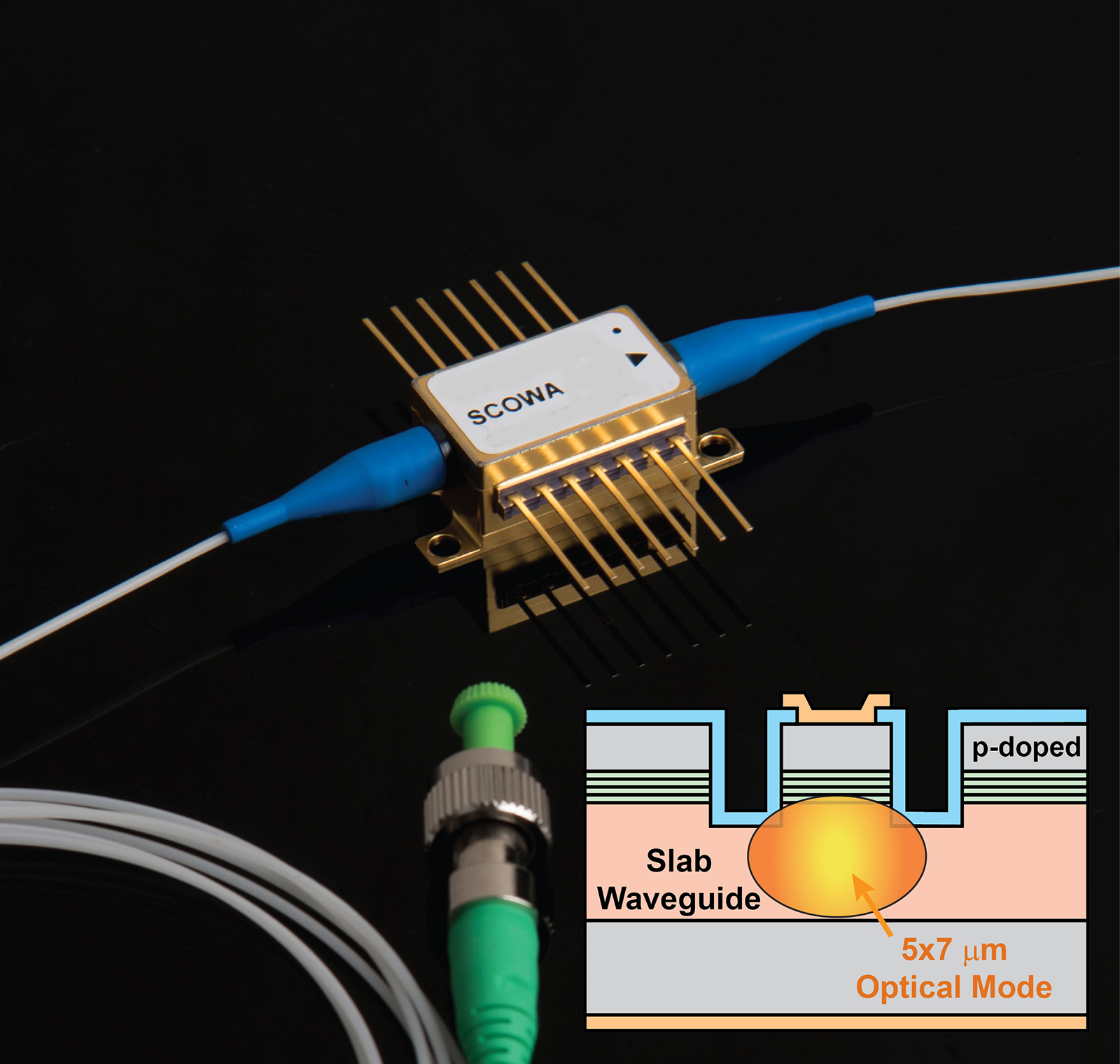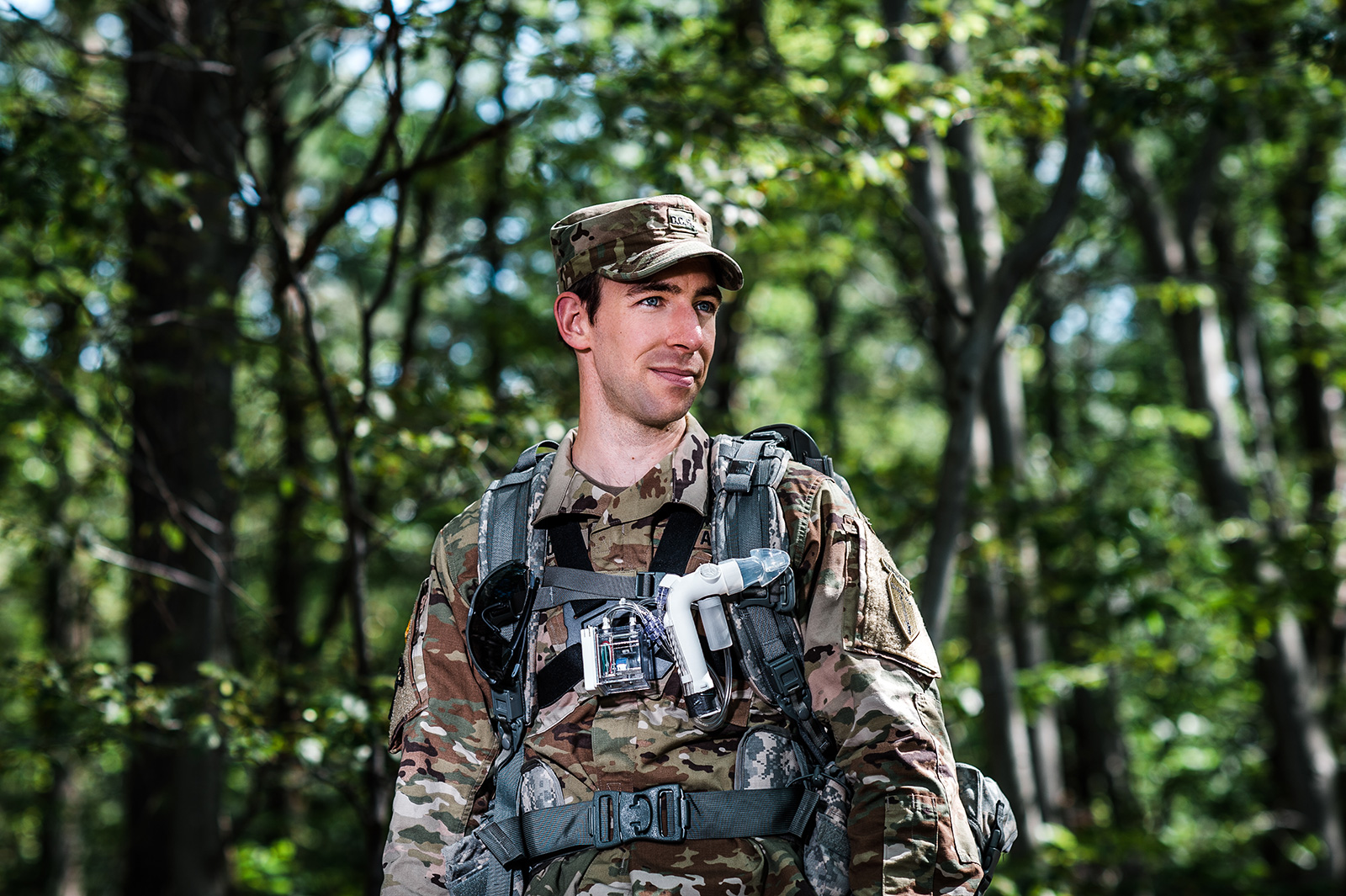News
Ten technologies developed at MIT Lincoln Laboratory are finalists for R&D 100 Awards
Awards recognize cutting-edge inventions from around the world.
by Dorothy Ryan | Communications and Community Outreach Office
On 10 August, the international science and engineering magazine R&D announced that ten technologies developed by researchers at MIT Lincoln Laboratory are among the 170 finalists for its 2017 R&D 100 Awards. For 55 years, these awards have been given to the 100 technologies judged by a panel of the magazine's editors and outside experts to be the most significant, innovative new developments of the year. Lincoln Laboratory's 2017 finalists represent the broad spectrum of its work.
Slab-Coupled Optical Waveguide
Lincoln Laboratory's Slab-Coupled Optical Waveguide (SCOW) semiconductor lasers and amplifiers are able to dramatically improve the performance of optical communication, laser radar, and microwave systems by enabling them to have longer reach, improved sensitivity, increased flexibility, and reduced size and power.
Wide-area Infrared System for Persistent Surveillance
Developed by the Laboratory for long-range, day and night surveillance, the portable Wide-area Infrared System for Persistent Surveillance (WISP) is capable of detecting and alerting operators to all moving objects in a monitored area. WISP's ability to continually update views of the area provides for enhanced security.
More on WISP ›
CO2/O2 Breath and Respiration Analyzer
In a partnership with the US Army Research Institute of Environmental Medicine, Lincoln Laboratory built the C2/O2 Breath and Respiration Analyzer (COBRA), a wireless, low-cost, breath sensor that measures the fraction of metabolic energy produced by carbohydrate versus fat oxidation. COBRA provides feedback on users' metabolism to aid them in monitoring weight and blood glucose levels, two factors important to controlling diabetes.
More on COBRA ›



Among the finalists for 2017 R&D 100 Awards are, top left, the Slab-Coupled Optical Waveguide amplifier (SCOWA) in a 14-pin butterfly-style package (inset is a cross-section schematic of the SCOW emitter); top right, the Wide-area Infrared System for Persistent Surveillance, seen here without its ruggedized protective enclosure; and, left, the portable C2/O2 Breath and Respiration Analyzer that includes a chest harness and bite grip that enable hands-free use of the system.
PRESymptomatic AGent Exposure Detection
The Laboratory worked with the U.S. Army Medical Research Institute of Infectious Diseases and the National Institutes of Health to develop the PRESymptomatic AGent Exposure Detection (PRESAGED) algorithm that exploits data from noninvasive wearable medical sensors to detect if a person was exposed to viruses or bacteria several days before overt symptoms, such as fever, appear.
Pulse-to-Pulse Phase Diversity Processing for Interference Suppression and Range Disambiguation
The Laboratory has pioneered a low-cost technique called Pulse-to-Pulse Phase Diversity Processing for Interference Suppression and Range Disambiguation that uses phase-diverse waveforms and specialized processing to help mitigate the interference that wind turbines can impose on radars that track aircraft and weather.
Polarimetric Co-location Layering
Lincoln Laboratory's Polarimetric Co-location Layering uses a novel algorithm that leverages polarimetry in maritime radar to mitigate the high false-alarm rate caused by radar returns from the sea surface. Such an algorithm could help ships' navigational radar discriminate solid obstacles from clutter such as strong wave motion.
More on Polarimetric Co-location Layering ›
Big DAWG Polystore System
The Big DAWG Polystore System—developed by the Laboratory in collaboration with the MIT Computer Science and Artificial Intelligence Laboratory, the University of Chicago, Northwestern University, and Intel—is the first open-source database management system that allows developers to leverage multiple, disparate database engines.
BigDAWG Website ›
Ground-Based Sense-and-Avoid System
The Ground-Based Sense-and-Avoid System, developed in cooperation with the U.S. Army, SRC Inc. and Kutta Technologies, is the first-in-production ground radar system that enables unmanned aircraft to see and avoid other aircraft.
Laser Aircraft Strike Suppression Optical System
Researchers from the Laboratory created the Laser Aircraft Strike Suppression Optical System, dubbed LASSOS, to detect scattered light from green lasers shone at aircraft, determine the lasers' points of origin, and alert police to the locations so officers can "round up" the perpetrators of these laser strikes that are disruptive or injurious to pilots.
More on LASSOS ›
Coherent Low-power Adaptive Signaling System
The Coherent Low-power Adaptive Signaling System lets multiple mobile radios cooperate and focus their energy on a base station to achieve significant reductions in transmit power, gains in data rate and/or range, and operation in spectrally congested environments. Laboratory technical staff worked with researchers from Raytheon BBN Technologies and the Harris Corporation to develop this application-specific integrated circuit system on chip.
In addition, Stolar Global Imaging included Lincoln Laboratory and The Ohio State University's Electrical and Computer Engineering Department as co-developers on Stolar's finalist, the AM Broadcast Band Radio Gradiometer Subsurface Utilities Made Visible Again.
The 100 winners for 2017 will be announced at the R&D 100 Awards Ceremony to be held on 16 November at the Walt Disney World Swan Resort in Orlando, Florida.
Since 2010, Lincoln Laboratory has received 32 R&D 100 Awards, including two R&D 100 Editor's Choice Awards, which are given to the top three technologies from among the year's 100 selected by R&D Magazine.
Posted August 2017
top of page